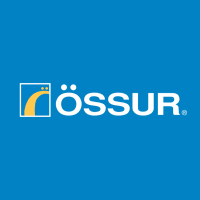Celebrating International Day of Women and Girls in Science
Össur’s largest impact on society is through the Company’s innovative products, research activities and expertise in the field of prosthetics and bracing and supports. Our commitment to the UN Sustainable Development Goals (SDGs) includes Goal #5 - Gender Equality.
We believe in diversity in its broadest sense and the importance of gender equality and women’s positive contribution to the workplace and the society. So today we proudly say Happy International Day of Women and Girls in Science! And we’re featuring just a few of the amazing women in science and technology at Össur who use their curiosity about the ‘hows’ and the ‘whys’ of the world to design products and processes to improve quality of life for patients around the world.
Hildur Einarsdóttir
I am a proud member of the R&D team, responsible for the Strategy & Operations division.
I was always very drawn to nerdy things as a kid. I liked to tear things apart, especially electronic things (radios were a big hit for a period of time) and made fair attempts to rebuild those, with varying success and limited joy from the owners of those objects. So engineering was a pretty straight forward choice. During the summers I used to work in health care, caring for people with dementia and learning from kids with autism. This experience had a big impact on me, and my educational path was very much defined by it. Being able to apply technology to health care has been the red thread throughout my academic and professional career.
The cross functional collaboration of experts we have in every field. We might have 30 people around the table, looking at the same prosthetic foot, all with a different view on that particular foot due to their background, experience and knowledge. It can sometimes prove a challenge to align those views, but I believe it makes our products, services, and strategies so much better and stronger in the end.
Elaine Miller
I am a clinical specialist working in the Northern Academy. I also support my colleagues in other markets if I can help with any upper extremity solutions and work with medical office and R&D.
I enjoyed maths and sciences in school which lead me to choose a career in this area.
I initially started working for Halliburton when I left school which if I’m honest I hated.
I enjoy working with people, so I decided electronics and the oil industry was not for me.
I went back to university and studied Prosthetics and Orthotics at Strathclyde University and to this day have not regretted this decision.
I’m very fortunate to be able to say I love my job.
To see that smile on a user’s face when they use their prosthetic device has to be the most rewarding and humbling part of my job, but also getting to meet these users, fellow CPO’S and therapists creating new friendships has got to be the coolest part.
Lisan Scheepers
I’m a clinical specialist on the North-Europe Team.
It is just super interesting how and why things work. When I was a physiotherapist, I spent a lot of hours in the prosthetic workshop to learn and try to understand how prosthetic technology works so I could relate it to the human body and understand how it can improve my patients’ mobility and quality of life.
My favorite thing about my job is showing and teaching my patients that an amputation is new beginning not an end!
Guðlaug Sigurðardóttir
I’m a Senior Global Product Manager. I identify user needs in the markets and translate that criteria during product development. I also take new products to the market that can help users.
I was drawn to science because of my curiosity and drive to understand how things work.
The coolest part of my job is being a part of a team that helps people live life without limitations.
Jana Rogoschin
I’m a clinical investigation specialist for bracing and supports. I was drawn to science by my curiosity for movement and the desire to learn more about processes in the human body that occur within activity. These highly complicated processes in joints and muscles, some of which are still not fully understood, can be affected by pathologies where our devices can support by positively influencing these misalignments and enabling the patient to live independently and participate in life again.
I love having the opportunity to work together with different departments and research many interesting questions, so I never get bored :)
